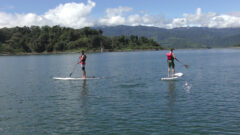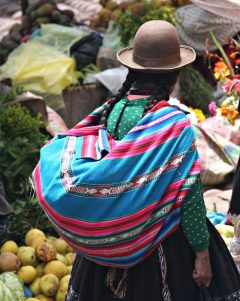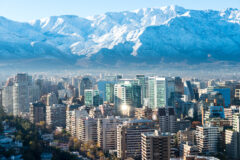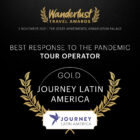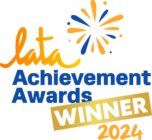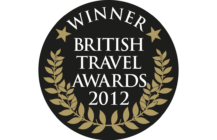Private Journeys
Signature Peru and Chile: Machu Picchu and Easter Island
15 days from £5,530pp
(based on two people sharing & excluding flights)
Itinerary
 Map
Map
Day 1
Arrive in Lima. Transfer to hotel in Miraflores.
Fly into Lima, set on the coastal desert strip between the Pacific and the Andes. Colonial Spain’s City of Kings is now a modern, bustling metropolis. The colonial centre, which is gradually being renovated, has many historic churches and buildings famed for their traditional intricate balconies. There are also several excellent museums. In recent years a number of world-class restaurants have opened, and the city is fast becoming the gastronomic capital of the western hemisphere.

Stay at -
Antigua Miraflores
Day 2
Guided tour of the capital.
Your guided walking tour offers an excellent overview of a city which is full of contrasting neighbourhoods, from the upmarket Pacific-side residential district Miraflores to the colonial magnificence of the historic centre. The walk starts on the clifftop overlooking the Pacific Ocean and beaches, including the romantic Parque del Amor, with its sculpture of two lovers embracing.
Continue to ‘Huaca Pucllana’, a pre-Inca adobe pyramid built over 1,500 years ago, before arriving at San Isidro, an elegant residential and commercial district with a beautiful olive grove and some super-smart hotels and restaurants surrounding its leafy well-tended squares. You’ll be ready for a snack at Tanta Restaurant, owned by the famous Peruvian chef Gastón Acurio where you can sample a typical Peruvian dish.
Thus refreshed, continue to the outskirts of central Lima where you will stroll through the baroque Torre Eagle Palace, and the Plaza de Armas, Lima’s grandiose historic main square – home to the cathedral and the presidential and Archbishop’s palaces. The appeal of the delicate wooden balconies and monumental colonial baroque architecture, is enhanced by the recent refurbishment of the area: the squares are now squeaky clean, lined with little artisan shops and modern cafés.

Stay at -
Antigua Miraflores
Day 3
Fly to Cusco and continue to the Sacred Valley of the Incas.
The Urubamba river carves its way across the raw plains of the altiplano before dropping down to the rainforested Amazon basin. Here, just beyond Cusco, the mature river is bordered by fields bulging with vegetables, fruit and cereals. This was the breadbasket of the Incas, and as such attracted the building of many temples, administrative centres and barracks; at the peak of the empire it was home to tens of thousands of inhabitants. Nowadays the oft well preserved, abandoned ruins share the beautiful rural landscape with modest Spanish colonial settlements and modern upstarts including a clutch of top quality hotels.
It’s a delightful scenic drive, a lovely introduction to the Andes, and along the way you will call in either at an animal sanctuary, llama and alpaca farm, or the artisan market at colonial Pisac.

Stay at -
Las Casitas del Arco Iris
Day 4
Full day guided tour in the Sacred Valley: Maras, Moray, Chincheros
Travel by road through the stunning countryside against a backdrop of the snow-capped Andes to Chinchero, an attractive market village with both a colonial and Inca heritage. The central square has a splendid Inca wall while on its upper level is the town’s adobe colonial church, decorated internally with beautiful floral designs. Watch a demonstration of the weaving of traditional Peruvian textiles. Continue to the Maras saltpans, a series of blinding white terraces which look a bit like a wedding cake: a natural source of saline water is evaporated by the strong Andean sun. In use since Inca times, the saltpans continue to be worked by the local community.
The tour also visits Moray, a grand Inca site pitting a windswept grassy plain which was an experimental agricultural centre at the apogée of the empire. It comprises numerous circular terraces carved into a large, natural amphitheatre, each one with a different microclimate from those above and below.

Stay at -
Las Casitas del Arco Iris
Day 5
Visit Ollantaytambo temple fortress, on to Machu Picchu.
Rising above the community of the same name, the walled terraces and fortress of Ollantaytambo provide some of the finest examples of Inca architecture, with the six monoliths of the Temple of the Sun an outstanding feature. The colonial village was built on top of an existing Inca settlement and the original Inca town blocks – known as canchas – can still be seen. It’s a rustic, atmospheric place where you can really get a sense of how life was lived in both the Inca and Spanish eras.
It is here where you join the train for your thrilling ride through the Urubamba canyon to Machu Picchu. The route passes through some of Peru’s most exquisite and dramatic scenery. From the fertile valley floor, rimmed by rugged brooding mountains, the track enters an ever-narrowing gorge: the river froths over water-smoothed boulders and vertical cliffs, increasingly draped in dripping tropical vegetation, tower skywards.
Machu Picchu, the world-famous terraced Inca citadel, sprawling across a mountain saddle where the Andes fall towards the Amazon basin, is the most magical of South America’s pre-Columbian archaeological sites. The city was founded in the 14th century as an important ceremonial centre. Undiscovered by the Spanish conquistadors and untouched by looters for 400 years, the site was very well preserved when the archaeologist, Hiram Bingham, stumbled upon it in 1911. The lush slopes of the forested mountains, swirling clouds rising up from the Urubamba valley, and the distant snow-capped peaks of the Andes all provide a stunning backdrop.
The majestic ruined city is reached by bus up a sinuous road, or on foot up a near vertical rocky path. You will have a guided tour of the ruins along one of the set trails, before heading back down to spend the night in Machu Picchu village.

Stay at -
Casa Andina Standard Machu Picchu
Day 6
Return to Ollantaytambo by rail and proceed back to Cusco.
You may choose to add an optional morning visit to the ruins before your train back to Ollantaytambo. From here, take a scenic drive to Cusco. Cusco – ancient capital of the Inca Empire and UNESCO World Heritage site – is an architectural and cultural jewel high up in the Andes at 3,399m. Many of the walls in the centre still incorporate Inca masonry and have stood the test of time far better than the colonial builders’ handiwork. But that’s not to belittle the craftsmanship of the Spanish: the blissful colonial churches, arcades and huge, imposing squares from which radiate tiny cobbled alleys, are impressive to say the least.
The city is a busy place thronging with visitors from across the world, giving it a real international buzz. But it is surely one of the most Peruvian cities – this in a country where so much of the cultural identity is intact -and your enjoyment of its discovery will be enhanced by the excellent food, drink and shopping opportunities. Browse the vast indoor market at San Pedro, with its towers of fruit and vegetables alongside alpaca wool sweaters, traditional jewellery and wood carvings, and observe the bustle of contemporary life while you explore the magnificent vestiges of the past.

Stay at -
Antigua Casona San Blas
Day 7
Guided walking tour of Cusco.
Much of the pre-Columbian stonework now serves as foundations for modern dwellings. Your private guided tour explores the magnificent Plaza de Armas, the 16th century cathedral and the church of Santo Domingo – distinguished from the many other churches in Cusco by its construction on the site of Qoricancha, Cusco’s major Inca temple.
Glowering over the northern outskirts of Cusco are the ruins of Sacsayhuamán, believed to have served the Inca Empire both as a fortress and ceremonial centre. There are some magnificent Inca walls, immaculately erected from huge rocks, some of which weigh as much as 130 tons. The visit also includes the nearby ruins of Tambo Machay, with its ceremonial fountains and bath, Puka Pukara – a staging post – and the temple of Q’enko.

Stay at -
Antigua Casona San Blas
Day 8
Fly to Santiago de Chile and transfer to your hotel.
Take advantage of a direct flight from Cusco to Santiago, Chile’s cosmopolitan capital. The city is a vast mélange of architectural styles reflecting an eventful history and immigration from many countries with contrasting cultural traditions. Modern high-rise buildings dominate the skyline but at street level Santiago retains some fine historic buildings alongside eye-catching contemporary structures.

Stay at -
Le Reve Santiago
Day 9
Full day guided walking tour to Valparaiso and a vineyard.
Visit Valparaiso, Chile’s principal port and seat of the Chilean parliament, located around 2 hours’ drive from Santiago. Very little remains of the colonial city that Drake plundered in 1578, or that Darwin saw in the 1830s, much having been destroyed by an earthquake in 1906. Present day Valparaiso retains a certain tumbledown charm and plenty of character, making it one of Chile’s most interesting and photogenic cities and, although there are some steep streets and steps to negotiate, it is a delight to explore on foot. The city can be divided into two areas: the lower part is the gritty commercial centre and port with narrow streets facing the bay; and above, covering the hills, are fine mansions and clapboard houses. These are brightly painted, continuing the legacy of the days when spare paint from ships in the docks would find its way up the hill. Steps, winding lanes and a series of funicular railways connect the upper and lower city.
After a stop for lunch (payable locally), drive back towards Santiago via the attractive, rolling countryside of the Casablanca Valley. With its pleasant Mediterranean climate tempered by the Pacific Ocean, the Casablanca Valley has become one of Chile’s premier wine-producing regions with a reputation for good quality Chardonnay, Sauvignon Blanc and Pinot Noir. Visit one of the vineyards for a tour of the winery accompanied by wine tasting, before continuing your return journey to Santiago

Stay at -
Le Reve Santiago
Day 10
Fly to Easter Island and your hotel in Hanga Roa town.
Easter Island (Isla de Pascua or Rapa Nui) is surely one of the most mysterious places on earth. Rising from the Pacific Ocean 3,790km west of the Chilean mainland, its nearest neighbour is Pitcairn Island 1,921km away and, although it forms part of Chilean territory, its culture is more Polynesian that Latin American. It is thought that the original inhabitants arrived by canoe from Polynesia or Marquesas and about half the population descends from the Rapa Nui people, the rest being immigrants from Chile.
The island is triangular in shape, with an extinct volcano on each tip. The subtropical territory was originally carpeted in forest but is now almost bare: as society developed, the original luxuriant vegetation was chopped down for buildings and fishing boats. Much of the island now has protected national park status (the rest is livestock grazing) and is listed by UNESCO. But although the island is now dominated by river-less moorland the scenery is exceptionally beautiful, especially the pristine beaches which lie at the foot of cliffs around the coast.

Stay at -
Taha Tai Hotel
Day 11
Introduction to Easter Island.
Most visitors are attracted to Easter Island by the watchful presence of 600 giant moais (stone statues), set on altar-like pedestals, all facing inland and believed to be manifestations of ancestor worship. Sculpted from quarried stone they were transported over large distances without the help of wheels. The whole island is best regarded as an open museum. Over the next few days you will visit come of the most imposing sites.
Today’s full-day guided tour introduces Easter Island’s archaeological heritage, encompassing the highlights of the island’s north and east coast. After a brief call at the restored platforms of Tahai (800 AD), drive to the white-sand beach at Anakena, said to be the arrival spot of the first Polynesians. There’s time to swim in the South Pacific and admire restored moai with their turquoise oceanic backdrop. Continue to Te Pito Kura, site of the largest moai ever erected (10m), which is now found lying down having been thrown over during the tribal conflicts of the 17th Century.
Explore the extinct volcano of Rano Raraku, the quarry where all the moai statues were carved, and where almost 400 of them still lie silently in various stages of the carving process. There’s plenty of time to explore the volcano, both inside and outside the crater. The tour ends at Ahu Tongariki with its 15 restored moai, Polynesia’s largest and most impressive single archaeological structure.

Stay at -
Taha Tai Hotel
Day 12
Further explorations of the island.
The day begins with a visit to the unrestored site at Vinapu, with its 6 toppled statues. It is one of the best examples of close-fitting Rapa Nui stonework. Move on to Puna Pau, the quarry of the topknots, or ‘hats’, which adorned many of the moai. Continue to the inland ahu (ceremonial platform) of Akivi, one of Easter Island’s iconic and most photographed sites.
In the afternoon, visit Rano Kau, a vast extinct volcanic crater and the island’s most spectacular natural feature. Orongo, dramatically perched between the cliffs and the crater’s edge, is the site of the long-standing Birdman competition, where competitors had to obtain the first egg of the migratory sooty tern – with the winner becoming chief of the island for the next 12 months. Finally, enjoy a short walk down to the coast and cave of Ana Kai Tangata, translated as the ‘Cannibal Cave’ and famous for the bird figures painted on its interior.

Stay at -
Taha Tai Hotel
Day 13
Day at leisure to relax or discover the hidden gems of Easter Island.
Enjoy a day at leisure to spend relaxing at the hotel, exploring the town, revisiting some of your favourite sites, or discovering some new ones on an optional excursion.

Stay at -
Taha Tai Hotel
Day 14
Fly back to Santiago.
In good weather, sunrise at Ahu Tongariki is extraordinary between October and April when the sun rises directly behind the 15-moai platform. Rise at dawn for the 30 minute drive to the east coast and be back in your hotel for breakfast, later departing for the airport and your flight back to Santiago.

Stay at -
Holiday Inn Santiago Airport
Day 15
Fly home
Depending on your flight time, either walk across the road to the terminal for your onward journey home, or squeeze in one last optional excursion.
Outline itinerary
Day 1
Arrive in Lima. Transfer to hotel in Miraflores.
Day 2
Guided tour of the capital.
Day 3
Fly to Cusco and continue to the Sacred Valley of the Incas.
Day 4
Full day guided tour in the Sacred Valley: Maras, Moray, Chincheros
Day 5
Visit Ollantaytambo temple fortress, on to Machu Picchu.
Day 6
Return to Ollantaytambo by rail and proceed back to Cusco.
Day 7
Guided walking tour of Cusco.
Day 8
Fly to Santiago de Chile and transfer to your hotel.
Day 9
Full day guided walking tour to Valparaiso and a vineyard.
Day 10
Fly to Easter Island and your hotel in Hanga Roa town.
Day 11
Introduction to Easter Island.
Day 12
Further explorations of the island.
Day 13
Day at leisure to relax or discover the hidden gems of Easter Island.
Day 14
Fly back to Santiago.
Day 15
Fly home
Inspired by this trip
Our exciting range of articles on Latin America explore everything from iconic destinations and lesser-known cultural gems to delicious traditional recipes. You’ll also find exclusive travel tips, first-hand client reviews and the chance to get your personal questions answered by our travel experts.
Papagaio
Your edit for Latin American inspiration
Our exciting range of articles on Latin America explore everything from iconic destinations and lesser-known cultural gems to delicious traditional recipes. You’ll also find exclusive travel tips, first-hand client reviews and the chance to get your personal questions answered by our travel experts.
View Extraordinary Inspiration
